HOME »
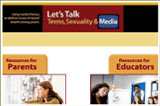
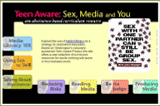
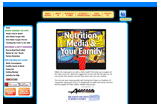
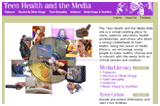
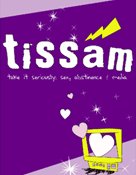
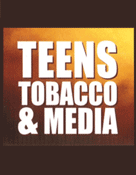
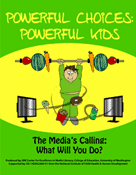
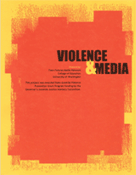
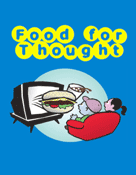
Curriculum Development
Overview
Adults seeking to promote media literacy education often tell us that it's difficult for them to find the time to develop all the materials that they would like to use. We are also often contacted by people working in the field who are simply trying to determine how to access media literacy-based materials that could be of use to them.
Because of the high demand for materials, we at the NW Center for Excellence have devoted considerable time and energy to developing media literacy-based curriculum material that can be easily used in a variety of learning environments. The materials our curriculum specialists have developed cover a wide range of topics.
Because of the high demand for materials, we at the NW Center for Excellence have devoted considerable time and energy to developing media literacy-based curriculum material that can be easily used in a variety of learning environments. The materials our curriculum specialists have developed cover a wide range of topics.
Online Resources
A major vehicle we have used to share our material has been our websites. Check out, for example, the large archive of lesson plans and other resource materials you’ll find on our sites. Note: all of these sites have been designed to include media literacy resources that in our experience have been found very useful not only to health educators but also to those working with a variety of subject areas across the curriculum. These resources have also been found very useful by those working in community settings.
www.teensexandthemedia.org
This site contains a huge archive of lesson plans and other sexual and reproductive health resource materials that have been developed in response to needs identified by extensive background research used to guide the design of this site. Many of the materials on this site have broad application beyond the field of sexual and reproductive health. Tutorials are also provided for parents seeking to understand more about some popular social media sites. This site features separate comprehensive sections for both parents and educators.

www.teenawareresources.org
This site was developed as an archive for the Washington State Office of the Superintendent’s Teen Aware project. In addition to its focus on sexual and reproductive health, this site also has proven very helpful for its vast collection of materials ranging from lesson plans for those interested generally in the area of media literacy education to materials that can prove useful in guiding youth to produce their own media materials using a range of mediums from print to video. This site also contains a section dedicated to the subject of assessing media work. Also be sure to check out the large collection of teen-generated media work featured on this site.

www.nutritionandmedia.org
This site was designed to provide parents of young children with resources pertaining to healthy eating. If you’re looking for activities and materials, you’ll find lots of ideas on this site, particularly in the section entitled Activities for Kids. This site also contains a booklet developed for parents entitled Food for Thought. The booklet can be downloaded here in both English and Spanish.

www.teenhealthandthemedia.org
This site addresses teen health issues from a media literacy perspective. Be sure to see the sections entitled Media Challenge and Teen Projects for ideas. You may also be interested in exploring the resources mentioned for each of the health issues addressed on this site.
Curriculum Tool Kits
The NW Center has designed curriculum tool kits which contain all the materials needed for teens to present these programs to other teens. Tool kits that are currently available are Take It Seriously: Sex, Abstinence & Media (TISSAM) and Teens, Tobacco & Media.
Take It Seriously: Sex, Abstinence & Media (TISSAM)
Take It Seriously: Sex, Abstinence & Media (TISSAM) is a media literacy- based curriculum presented by teens to teens. The curriculum made possible with funding from the Washington State Department of Health (DOH) requires inquiry, critical thinking and problem-solving skills of both its teen audience as well as its teen presenters. Through its lessons, teens become engaged in questioning and reexamining their own knowledge, attitudes and choices regarding sexual and reproductive health issues. The accompanying teacher’s material offers guidance and the necessary resources for training teens to present these lessons to their peers.
The purpose of media literacy education, the foundation for this program, is to help students develop the habits of inquiry and skills of expression they need to become critical thinkers and effective communicators in today’s media-rich environment. Media literacy expands the concept of literacy (reading and writing) to include all forms of media.
The American Academy of Pediatrics (AAP) in their September 2010 Policy statement—Sexuality, Contraception and the Media tells us that it can now be argued that the media have become one of the leading sex educators in the United States today. The AAP urges schools to insist on comprehensive sex education programs that incorporate the basic principles of media literacy in order to counter the influence of sexually suggestive and explicit media. Considerable research, as the AAP so clearly notes, has indicated the media can have a major effect on young people’s attitudes and behaviors. Studies have shown, however, that effective media literacy programs can be protective against unhealthy media effects. One of the main studies that the AAP chooses to cite as an example here is research conducted during the development of the TISSAM program.
For more information about the TISSAM program and for an order form to obtain your copy of the TISSAM tool kit, go to: http://depts.washington.edu/sexmedia/tissam/order.php
The purpose of media literacy education, the foundation for this program, is to help students develop the habits of inquiry and skills of expression they need to become critical thinkers and effective communicators in today’s media-rich environment. Media literacy expands the concept of literacy (reading and writing) to include all forms of media.
The American Academy of Pediatrics (AAP) in their September 2010 Policy statement—Sexuality, Contraception and the Media tells us that it can now be argued that the media have become one of the leading sex educators in the United States today. The AAP urges schools to insist on comprehensive sex education programs that incorporate the basic principles of media literacy in order to counter the influence of sexually suggestive and explicit media. Considerable research, as the AAP so clearly notes, has indicated the media can have a major effect on young people’s attitudes and behaviors. Studies have shown, however, that effective media literacy programs can be protective against unhealthy media effects. One of the main studies that the AAP chooses to cite as an example here is research conducted during the development of the TISSAM program.
For more information about the TISSAM program and for an order form to obtain your copy of the TISSAM tool kit, go to: http://depts.washington.edu/sexmedia/tissam/order.php

Teens, Tobacco & Media
Teens, Tobacco & Media is intended to be presented by teens to teens. All of the lessons in the program were designed by Washington State high school age teens as they considered the strategies and resources they would want to use if they were the teacher and were eager to reach their students with critical messages about tobacco use. Each of the images, activities, handouts, and even the video clips have been included in the program because teens decided these would be effective in engaging and involving both their high school age peers as well as middle school age youth in the critical issues they felt needed to be addressed. See http://depts.washington.edu/thmedia/view.cgi?section=tobacco&page=teenprojects
The program was first pilot tested in 2001 at select sites in Washington. Since Teen Futures, University of Washington worked directly with the teens and collaborated with them on the production of the program, an independent research team from Washington State University (WSU) was selected to conduct the pilot study. Based on its exciting initial results, the program was then field tested in subsequent years with thousands of students in communities across the state. Throughout both the pilot and the broader statewide implementation, high school age teen teams served as presenters to audiences of their peers. The results of the statewide implementation provided considerable additional data confirming the success of Teens, Tobacco & Media in reaching its audience. In fact, the teens had managed to exceed even Teen Futures' high expectations for the success of this new program!
We would like to especially acknowledge the Washington State Department of Health for their strong commitment to youth tobacco prevention and their continued support that has made Teens, Tobacco & Media possible.
For more information as to how you can obtain your copy of Teens, Tobacco & Media from the Washington State Department of Health, please contact Marilyn Cohen, PhD, Director NW Center for Excellence in Media Literacy, macohen@u.washington.edu.
The program was first pilot tested in 2001 at select sites in Washington. Since Teen Futures, University of Washington worked directly with the teens and collaborated with them on the production of the program, an independent research team from Washington State University (WSU) was selected to conduct the pilot study. Based on its exciting initial results, the program was then field tested in subsequent years with thousands of students in communities across the state. Throughout both the pilot and the broader statewide implementation, high school age teen teams served as presenters to audiences of their peers. The results of the statewide implementation provided considerable additional data confirming the success of Teens, Tobacco & Media in reaching its audience. In fact, the teens had managed to exceed even Teen Futures' high expectations for the success of this new program!
We would like to especially acknowledge the Washington State Department of Health for their strong commitment to youth tobacco prevention and their continued support that has made Teens, Tobacco & Media possible.
For more information as to how you can obtain your copy of Teens, Tobacco & Media from the Washington State Department of Health, please contact Marilyn Cohen, PhD, Director NW Center for Excellence in Media Literacy, macohen@u.washington.edu.
Other Curriculum Materials
The NW Center has also developed other curriculum units addressing subjects such as nutrition and physical activity and youth violence. Examples of these materials are Powerful Choices: Powerful Kids, Violence & Media and Food for Thought.
Powerful Choices: Powerful Kids
Powerful Choices is a media literacy-based curriculum unit focused on the subjects of nutrition and physical activity. The Powerful Choices unit complete with tool kit was originally developed in collaboration 4th and 5th grade teachers in Washington, Oregon and Idaho with funding from the National Institute of Child Health and Human Development and support from the Center for Public Health Nutrition, UW. The program was later adapted for use with youth members 5-18 enrolled in the Boys and Girls Clubs of King County with the support from Public Health-Seattle & King County and the U.S. Department of Health and Human Services. Boys and Girls Club staff and teen members were trained to serve as presenters of this unit using training materials the NW Center developed for the Clubs. The accompanying tool kit contains all the major materials required for presenting this curriculum unit. Powerful Choices is not available for distribution at this time.

Violence & Media
Violence & Media is a media literacy-based youth violence prevention curriculum unit developed and refined over a four year period in collaboration with middle and high school teachers from the Seattle School District. It was also piloted in the Seattle School District as well as in a rural school district. The program features carefully selected activities and videos designed to foster discussion and reflection. One of the goals of this unit is to encourage students to consider actions that could be taken both collectively and as individuals to prevent violence in their own school. Following the completion of the program, many of the students implemented some of their ideas in their respective schools. The NW Center’s Teen Futures division began working in 1999 to develop the Violence & Media curriculum unit with support from the State Juvenile Violence Prevention Grant Program. For more information about Violence & Media see: http://depts.washington.edu/thmedia/view.cgi

Food for Thought
Food for Thought is a media literacy-based presentation kit developed in collaboration with groups of Head Start and Early Childhood Education and Assistance Program (ECEAP) parents and our partner organization Action for Media Education to address the subject of healthy eating for young children. This one-hour presentation along with all the accompanying materials the presenter will require has been developed for use by parent presenters who are planning to speak to a parent audience. The Food for Thought presentation kit was made possible with funding from the Steps to a HealthierUS Cooperative Agreement of the U.S. Department of Health and Human Services and the support of Public Health-Seattle & King County.
The NW Center holds training sessions for parents who are interested in becoming presenters to the group of their choice. Some parents have chosen to present Food for Thought to their schools, others to faith-based groups and/or other groups where they belong and still others choose to present it to friends, neighbors and relatives in the comfort of their own homes. Training sessions are also available for those working in programs that serve parents. For more information, call 1-888-833-6638 or write NW Center Director Marilyn Cohen macohen@u.washington.edu
The NW Center holds training sessions for parents who are interested in becoming presenters to the group of their choice. Some parents have chosen to present Food for Thought to their schools, others to faith-based groups and/or other groups where they belong and still others choose to present it to friends, neighbors and relatives in the comfort of their own homes. Training sessions are also available for those working in programs that serve parents. For more information, call 1-888-833-6638 or write NW Center Director Marilyn Cohen macohen@u.washington.edu
